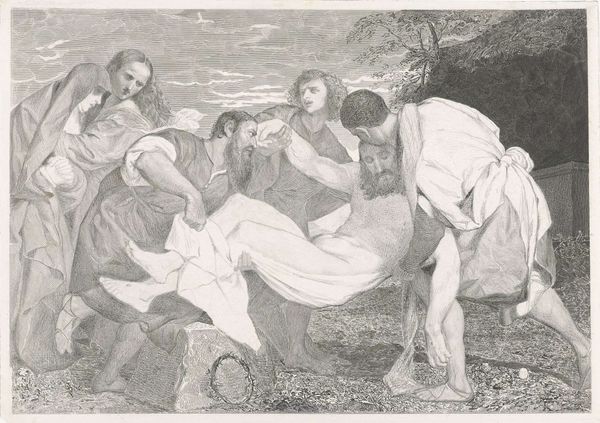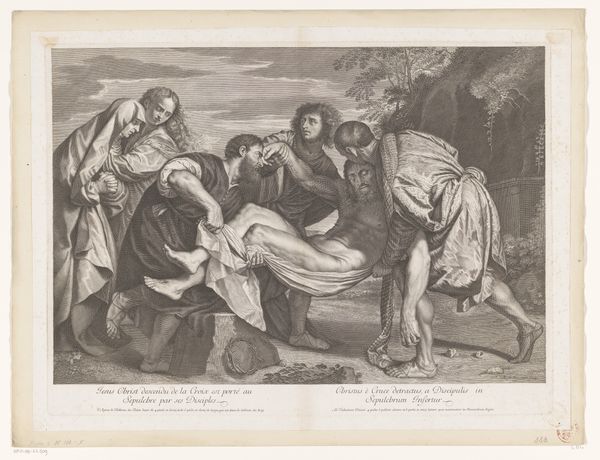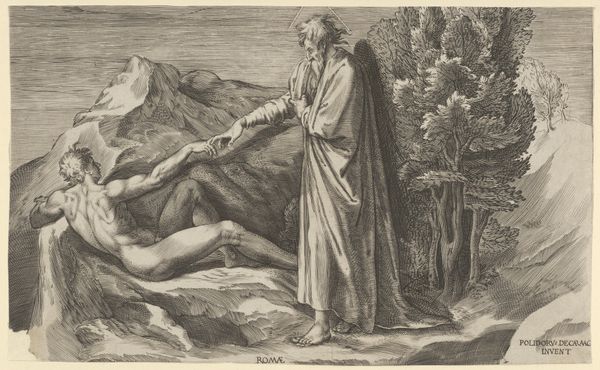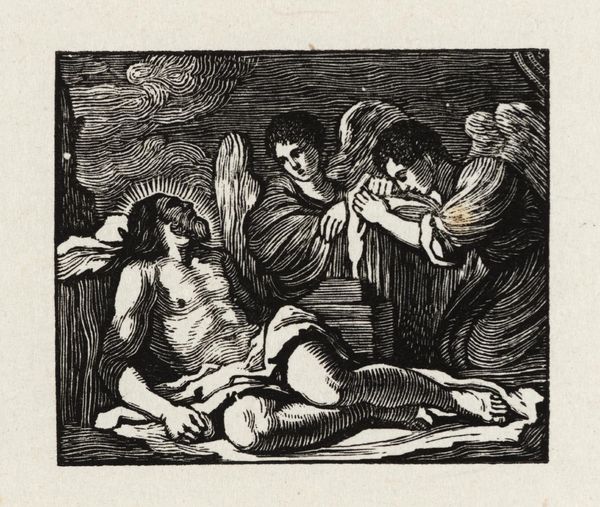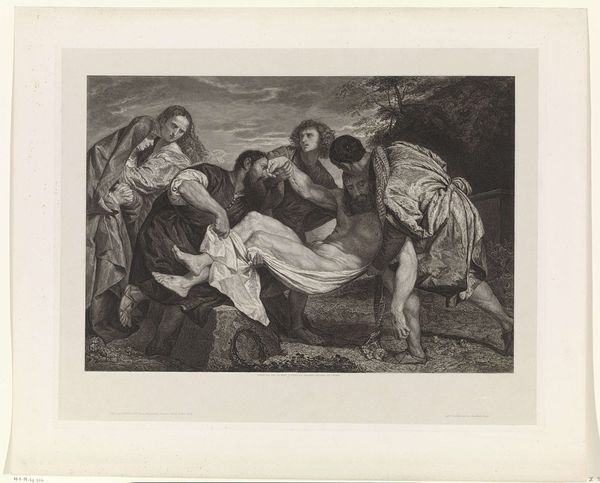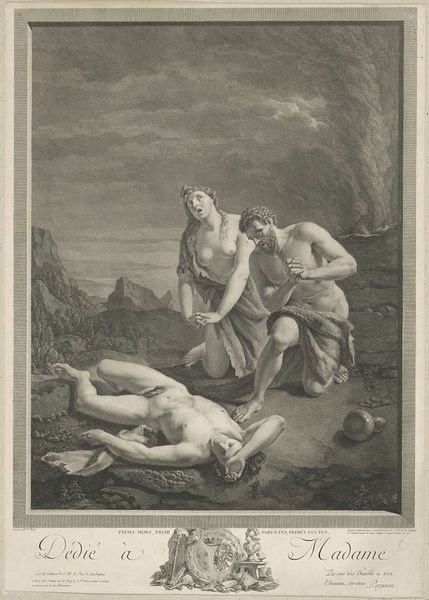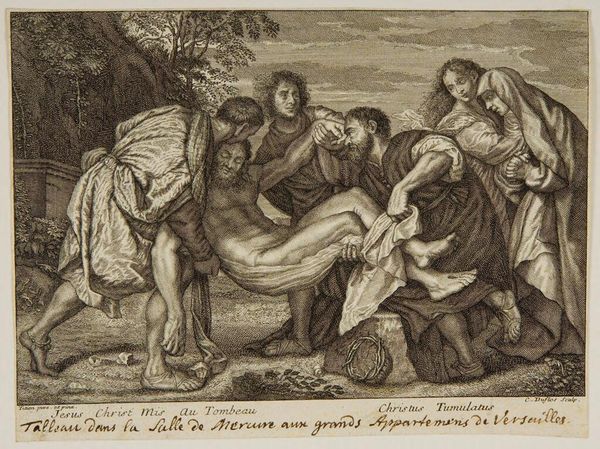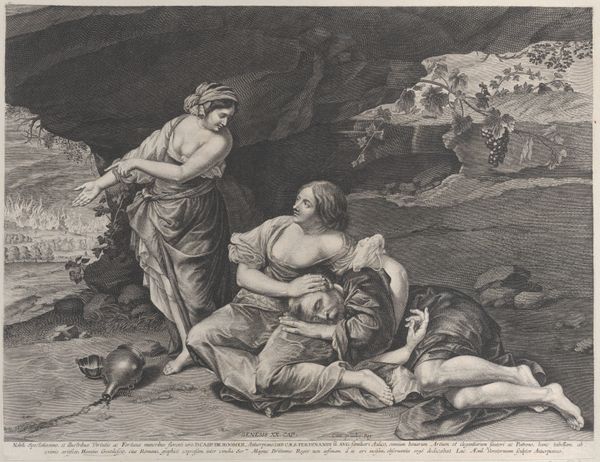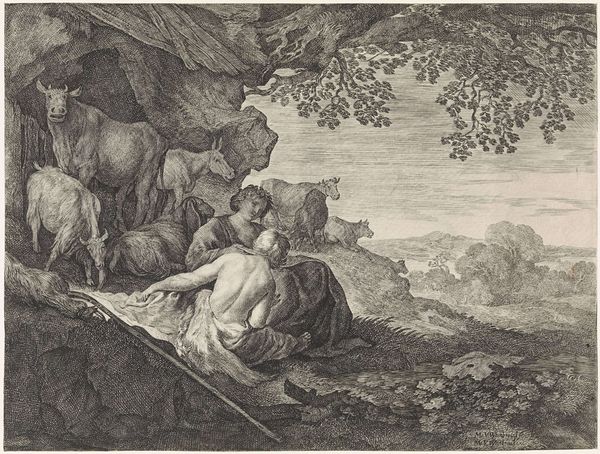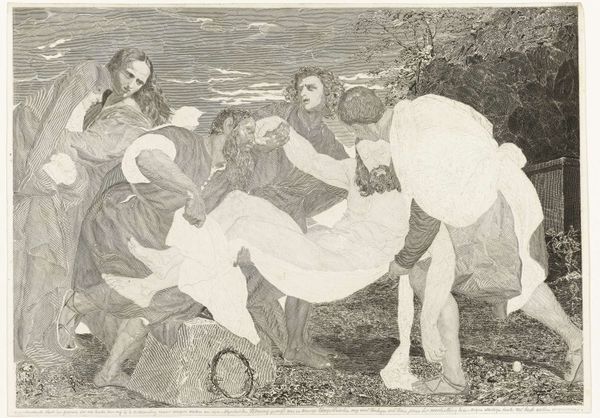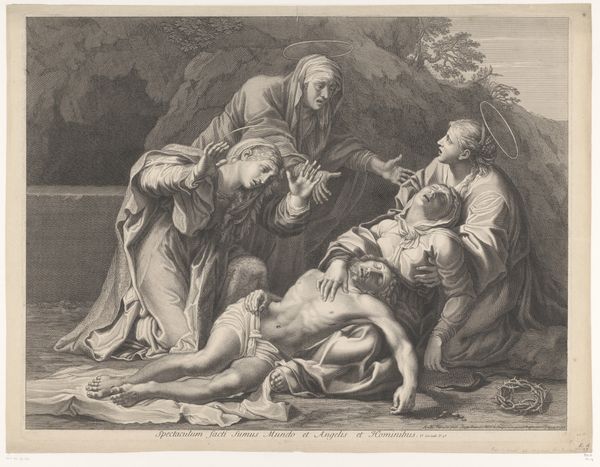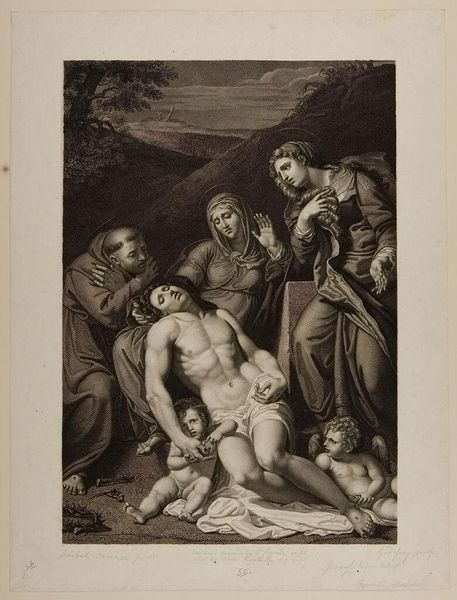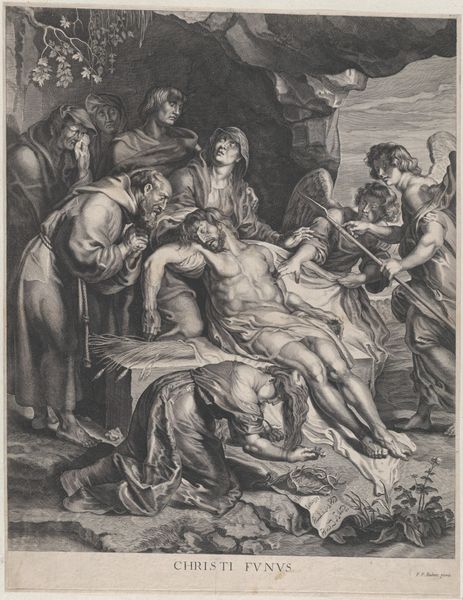
drawing, print, charcoal, engraving
#
drawing
# print
#
charcoal drawing
#
figuration
#
pencil drawing
#
19th century
#
charcoal
#
history-painting
#
engraving
Dimensions: height 294 mm, width 421 mm
Copyright: Rijks Museum: Open Domain
Curator: What strikes me immediately is the weight. Not just of the figure itself, but the emotional weight carried by the individuals surrounding the body. Editor: That’s a great starting point. What we're looking at is "The Entombment of Christ," a print, possibly an engraving, crafted sometime between 1847 and 1849. The artist is Johannes de Mare. Curator: Engravings allow for such detail. The linework is remarkable. Look how the body is draped, the play of light and shadow defining the form beneath. There’s a real sense of three-dimensionality achieved here. Editor: The scene is heavy with symbolism, and of course, deeply rooted in religious and socio-political context of the time. Prints like this had a public role. They disseminated religious imagery, reinforcing societal values. It also reflected, potentially, the artistic norms of the period. Curator: And consider the composition; the figures are tightly clustered. Each face tells a story of grief. Note how their expressions vary—some are stoic, others openly weeping. De Mare really understood human emotion. Editor: The composition certainly guides the viewer's eye right to the central figure, the pale body of Christ acting as a focal point. Did prints such as this reflect or challenge established power structures and religious interpretations? The way de Mare interprets the religious doctrine in relation to contemporary audiences has a social bearing. Curator: Possibly both. Art in this period became democratized and reached diverse audiences. While on the one hand reinforcing existing beliefs, this could stimulate personal and, later on, alternative reflections of faith. There's a rawness in the grief portrayed here that transcends religious doctrine. It speaks to a universal human experience of loss. Editor: Well said. These intertwined aspects really allow us to connect deeply with a 19th-century interpretation of a biblical event. Curator: Precisely. Considering formal structure and also the artwork’s accessibility opens doors for a wider reflection of faith. Editor: A productive discussion! And definitely something for our listeners to consider as they view this work.
Comments
No comments
Be the first to comment and join the conversation on the ultimate creative platform.
